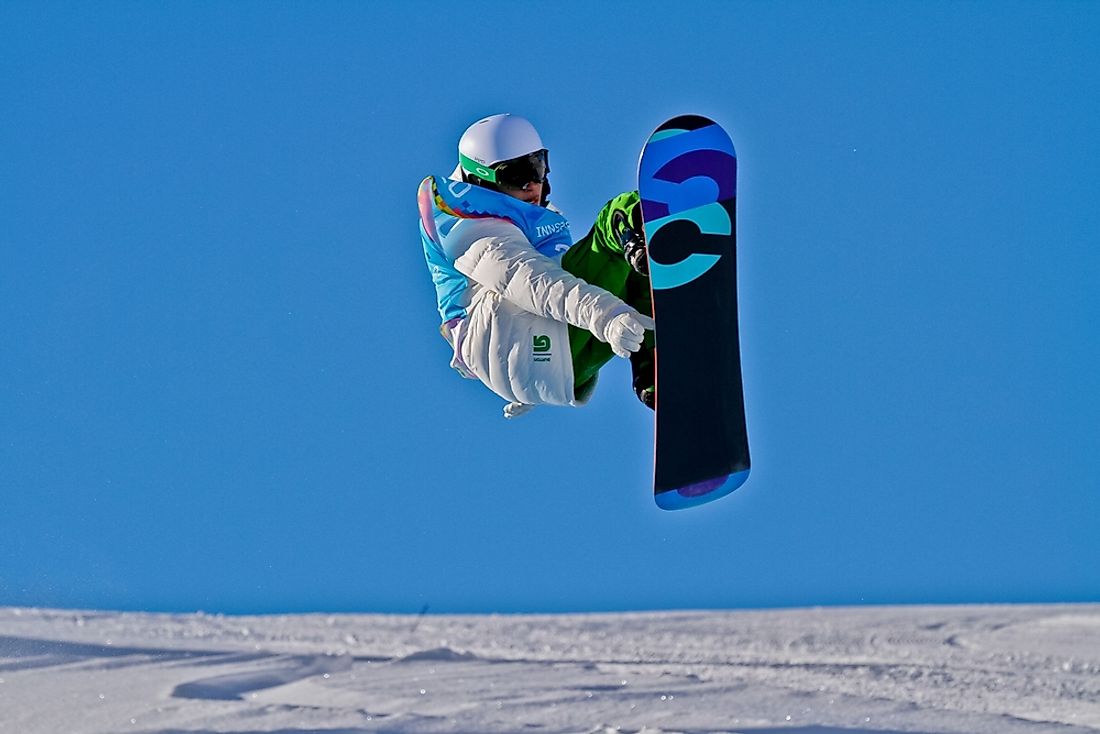Winter Olympic Games: Snowboarding

Snowboarding is a recreational and a popular Winter Olympic and Paralympics sport involving the participants sliding down an ice-covered hill while standing on a snowboard attached to their legs. The athletes race against each other down the icy slope at a high speed where they are required to tackle bumps, sharp turns, and jumps. The athletes are timed as they race down the slope. Development of snowboarding has been influenced by sledding, skiing, and surfing. In fact, it contains elements of surfing, skating, and skiing. This sport is most common in the US and other countries that experience snow. It became widespread among people who were seeking activities to take part in during the winter in the US.
The History and Origin of Snowboarding
Snowboarding traces its origin in the US back in the 1960s. A Michigan based engineer, Sherman Poppen, probably the father of snowboarding, made a toy for his daughters by fastening two skis together and fixing a rope on one end for control. The toy has been the basis for the development of the modern snowboards. The toy resembled the modern day snowboards apart from the ropes used to attach the snowboards to a rider's feet. The snowboard quickly gained popularity among the daughters’ friends. On realizing the popularity the toy had gained, Poppen sold the idea to a manufacturer, Brunswick Co-operation which gave the snowboards even greater popularity. The company sold over million snowboards in a span of two years. In February 1968, Poppen organized a snowboarding completion in Michigan. Snowboarding was first included in 1998 Winter Olympic Games which took place in Nagano, Japan.
Snowboarding at the Olympics
In the Nagano competition, the athletes were first categorized according to gender. The events included the Half-pipe competition and the slalom competition. The sport was a huge success at Nagano, forcing the IOC to again include it in the 2002 Winter Olympics in Salt Lake. In the 2006 Winter Olympics in Torino, Italy, four riders were allowed to race along an ice track that comprised large U and S turn, bumps, and jumps. Today, the snowboard race has many events which include Parallel Slalom, Giant Slalom, Triple Slalom, Banked Slalom, Snowboard Cross, and Team Snowboard Cross.
Safety and Precautions When Snowboarding
Just like any other Winter Olympic Game, snowboarding is risky. Injuries, especially sprains, are common to beginners and less experienced riders. Most of the injuries occur on the upper parts of body, particularly the wrists. Head injuries are also severe and common during snowboarding. The athletes tend to collide or fall backward, slamming their heads on the ground, which might result in occipital head injury. For this reason, a helmet and eye protective wear should always be worn during snowboarding. The snowboarding boots should also fit the riders properly. To protect other body parts, padding is recommended in areas like the elbows, hips, knees, and shoulders. The rider should also be cautious of trees, loose snow, or any other obstructions. Having an experienced and qualified trainer is one of the ways to reduce accidents. However, being an expert does not guarantee you will have injury-free races.











